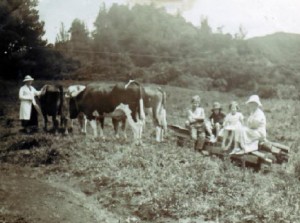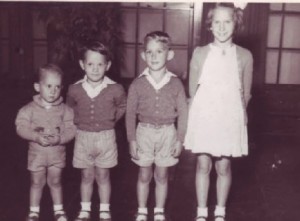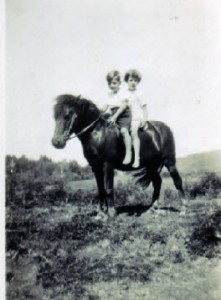As far as I can remember crops were grown mostly as extra cattle feed. There was a kind of leafy cabbage called chaumolia that would hold drops of dew on the leaves. This was good to drink. The paddock would be divided into sections by temporary fencing and the animals were allowed to clear one section at a time.
Another crop was swedes that had to be harvested by hand. They were easy enough to pull up as they just had roots in the ground, but on cold frosty mornings it was not much fun. There would be a sledge with boards fitted to the sides and we had to fill it to be fed to the sheep. One day John got fed up with having to take a load out to where the sheep were and instead he dumped the load in the cow paddock. The cows loved their change of diet and munched away happily. Unfortunately the swedes were strong flavoured and tainted their milk for several days, and it could not be sent to the dairy, but had to be fed to the pigs or thrown out. John was not very popular for a while and kept out of Dads reach, as he had a two inch wide strong belt and would use it without much provocation.
I can remember paddocks being ploughed and prepared for sowing. First it was ploughed, then discs were used to chop up the furrows. After that the harrows were used to break up the ground even smaller. When it was fine enough it was hand sown with seed and left to grow. There were no such things as tractors in those days.
There were different types of grass seeds sown; some were for grazing and others were for haymaking. When it was haymaking time every available person was called in to help. It had to be done in hot dry weather. First it was cut with scythes and left to dry, then a couple of days later it had to be turned over with long pronged pitch forks. And again left to dry. When that was done it was gathered up and built into haystacks. That was the part I liked best. There was a special way of building them so they would not fall over or let rain soak through them. The sides had to be made strong and straight first and the centre filled in as we went. We worked by standing in the middle of the stack packing it down as we went until it was high enough, then the top was firmly finished off like the sides .



